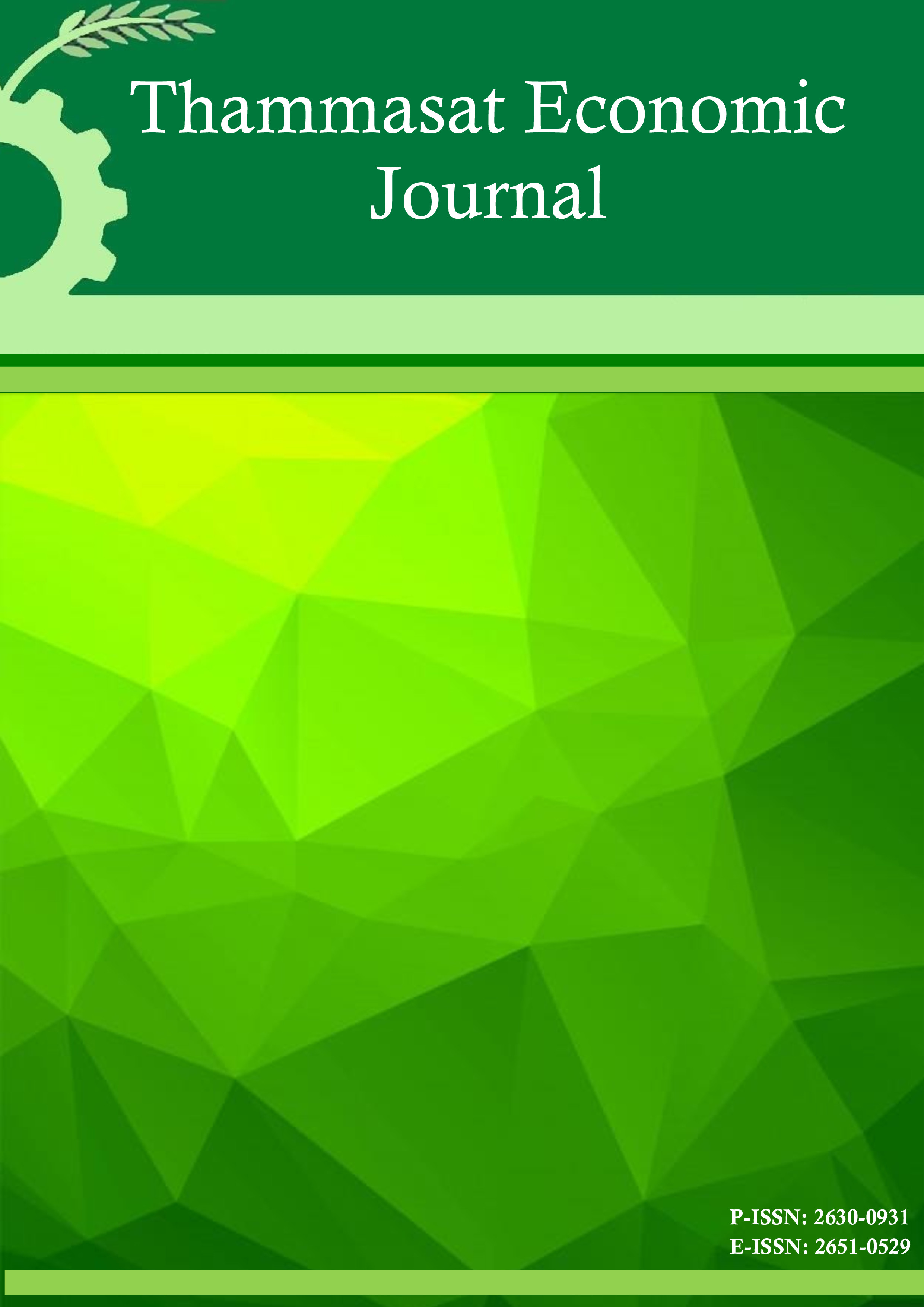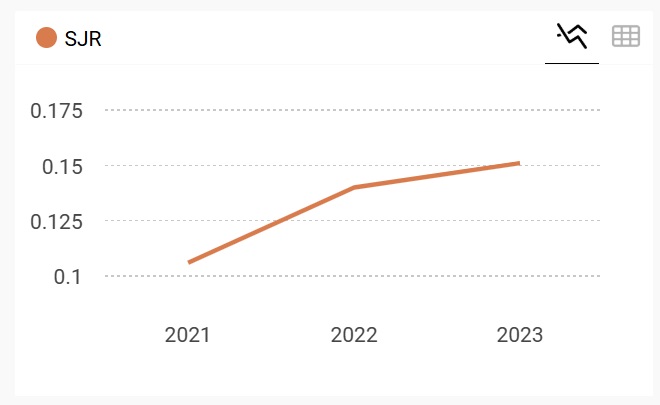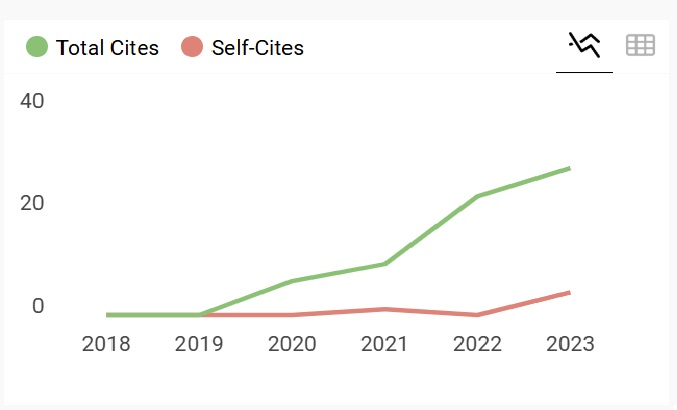Destination Image and International Tourist Behaviors under Thailand’s Political Crisis
Keywords:
destination image of Thai tourism, Thailand’s political crisis, structural equation modelAbstract
The objective of this article is to study and test the causal relationships between the destination image and international tourist behaviors as well as destination loyalty of Thai tourism during the Thai political crises between October 2008 to May 2009. A Structural Equation Model (SEM) was used to analyze the data. The model consists of 19 observable variables, one external latent variable, destination image, and four internal latent variables, attribute satisfaction, perceived value, total satisfaction and destination loyalty. The results of
the study show that the constructed model is strong enough to be used to test the behaviors of international tourists under different circumstances. This is so because the differences in circumstances do not lead to changes in behavior at the overall structure level, but rather to changes within the behavioral structure of international tourists only. It was found that whatever crisis that has occurred in Thailand, the social atmosphere of “Thainess” remains the most important destination image of Thai tourism. However prices have been found to be increasingly important after the occurrence of the political crises. Changes in destination image due to political crises do have influence on international tourists’ satisfaction on individual tourism activities, though the impact on the overall satisfaction and destination loyalty has been found to fairly small. The impact of the political crises on destination image of Thai tourism is more of short term nature. Therefore, in the short run there is no necessity to urgently improve destination image, but rather to create confidence and restore the social atmosphere of Thainess.
References
2. Backman, S.J. and Crompton, J.L. (1991) The usefulness of selected variables for predicting activity loyalty, Leisure Science, 13(3), pp. 205-220.
3. Backman, S.J. and Veldkamp, C. (1995) Examination of the relationship between service quality and user loyalty, Journal of Park and Recreation Administration, 13(2), pp. 29-41.
4. Baker, D.A. and Crompton, J.L. (2000) Quality, satisfaction and behavioral intentions, Annals of Tourism Research, 27(3), pp. 785-804.
5. Baloglu, S. and McCleary, K.W. (1999) A model of destination image formation, Annals of Tourism Research, 26(4), pp. 868-897.
6. Barnes, J. (2009) Restoring Thailand’s tourism destination image in the wake of the resent political crises: a few proposals, AU-GSB e-Journal, 2(1), pp. 3-16.
7. Bigné, J.E., Sánchez, M.I. and Sánchez, J. (2001) Tourism image, evaluation variables and after purchase behavior: Inter-relationship, Tourism Management, 22(6), pp. 607-616.
8. Bojanic, D.C. (1996) Consumer perceptions of price, value and satisfaction in the hotel industry: An exploratory study, Journal of Hospitality & Leisure Marketing, 4(1), pp.5-22.
9. Bolton, R.N. and Drew, J.H. (1991) A multistage model of customers’ assessments of service quality and value, Journal of Consumer Research, 17(4), pp. 375-384.
10. Brady, M.K. and Cronin, J.J. (2001) Some new thoughts on conceptualizing perceived service quality: A hierarchical approach, Journal of Marketing, 65(3), pp. 34-49.
11. Cavlek, N. (2002) Tour operators and destination safety, Journals of Tourism Research, 29(2), pp. 478-496.
12. Chen, C.-F. and Chen, F.-S. (2010). Experience quality, perceived value, satisfaction and behavioral intentions for heritage tourists, Tourism Management, 31(1), pp. 29-35.
13. Chen, C.-F. and Tsai, D. (2007) How destination image and evaluative factors affect behavioral intentions?, Tourism Management, 28(4), pp. 1115-1122.
14. Chi, C.G.-Q. and Qu, H. (2008) Examining the structural relationships of destination image, tourist satisfaction and destination loyalty: An integrated approach, Tourism Management, 29(4), pp. 624-636.
15. Chon, K.-S. (1990) The role of destination image in tourism: A review and discussion, Tourism Review, 45(2), pp. 2-9.
16. Chon, K.-S. (1992) The role of destination image in tourism: An extension, Tourism Review, 47(1), pp. 2-8.
17. Chu, F.L. (2008) A fractionally integrated autoregressive moving average approach to forecasting tourism demand, Tourism Management, 29(1), pp. 79–88.
18. Crompton, J.L. (1979) An assessment of the image of Mexico as a vacation destination and the influence of geographical location upon that image, Journal of Travel Research, 17(4), pp. 18-23.
19. Crompton, J.L. and Ankomah, P.K. (1993) Choice set propositions in destination decisions, Annals of Tourism Research, 20(3), pp. 461-476.
20. Cronin, J.J., Brady, M.K. and Hult, G.T.M. (2000) Assessing the effects of quality, value and customer satisfaction on consumer behavioral intentions in service environments, Journal of Retailing, 76(2), pp. 193-218.
21. Dimanche, F. and Havitz, M.E. (1994) Consumer behavior and tourism: Review and extension of four study areas, Journal of Travel and Tourism Marketing, 3(3), pp. 37-57.
22. Duman, T. and Mattila, A.S. (2005) The role of affective factors on perceived cruise vacation value, Tourism Management, 26(3), pp. 311-323.
23. Echtner, C.M. and Ritchie, J.R.B. (2003) The meaning and measurement of destination image, The Journal of Tourism Studies, 14(1), pp. 37-48.
24. Ekinci, Y., Riley, M. and Chen, J. (2001) A review of comparisons standars used in service quality and customer satisfaction studies: Emerging issues for hospitality and tourism research, Tourism Analysis, 5(2-4), pp. 197-202.
25. Fakeye, P.C. and Crompton, J.L. (1991) Image differences between prospective, first-time and repeat visitors to the Lower Rio Grande Valley, Journal of Travel Research, 30(2), pp.10-16.
26. Faulkner, B. (2001) Towards a framework for tourism disaster management, Tourism Management, 22(2), pp. 135-147.
27. Fuchs, G. and Reichel, A. (2006) Tourist destination risk perception: the case of Israel, Journal of Hospitality & Leisure Marketing, 14(2), pp. 83-108.
28. Gartner, W.C. (1989) Tourism image: Attribute measurement of state tourism products using multidimensional scaling techniques, Journal of Travel Research, 28(2), pp. 16-20.
29. Gartner, W.C. (1994) Image formation process, Journal of Travel and Tourism Marketing, 2(2-3), pp. 191-216.
30. Gartner, W.C. and Shen, J. (1992) The Impact of Tiananmen Square on China’s Tourism Image, Journal of Travel Research, 30(4), pp. 47-52.
31. Gitelson, R.J. and Crompton, J.L. (1984) Insights into the repeat vacation phenomenon, Annals of Tourism Research, 11(2), pp. 199-217.
32. Goodrich, J.N. (2002) September 11, 2001 attack on America: a record of the immediate impacts and reactions in the USA travel and tourism industry, Tourism Management, 23(6), pp. 573-580.
33. Huang, J.-H. and Min, J.C.H. (2002) Earthquake devastation and recovery in tourism: the Taiwan case, Tourism Management, 23(2), pp. 145-154.
34. Kozak, M. and Rimmington, M. (2000) Tourist satisfaction with Mallorca, Spain, as an offseason holiday destination, Journal of Travel Research, 38(3), pp. 260-269.
35. Laws, E., and Prideaux, B. (2005) Crisis management: a suggested typology, Journal of Travel and Tourism Marketing, 19(2/3), pp. 1-8.
36. Lee, C.-K., Lee, Y.-K., and Lee, B. (2005) Korea’s destination image formed by the 2002 world cup, Annals of Tourism Research, 32(4), pp. 839-858.
37. Lepp, A. and Gibson, H. (2003) Tourist roles, perceived risk and international tourism, Annals of Tourism Research, 90(3), pp. 606-624.
38. Lim, C. and McAleer, M. (2005) Analyzing the behavioral trends in tourist arrivals from Japan to Australia, Journal of Travel Research, 43(4), pp. 414-421.
39. Mansfeld, Y. (1992) From motivation to actual travel, Annals of Tourism Research, 19(3), pp.399-419.
40. Martín, H.S. and Bosque, I.A.R.D. (2008) Exploring the cognitive-affective nature of destination image and the role of psychological factors in its formation, Tourism Management, 29(2), pp. 263-277.
41. Mitchell, V.W. and Vasso, V. (1997) Perceived risk and risk reductions in holiday purchase: a cross-cultural and gender analysis, Journal of Euromarketing, 6(3), pp. 47-97.
42. Murphy, P.E. and Pritchard, M. (1997) Destination price-value perceptions: An examination of origin and seasonal influences, Journal of Travel Research, 35(3), pp. 16-22.
43. Oh, H. (2000) Diners’ perceptions of quality, value and satisfaction: A Practical Viewpoint, Cornell Hotel and Restaurant Administration Quarterly, 41(3), pp. 58-66.
44. Oliver, R.L. (1993) Cognitive, affective, and attribute bases of the satisfaction response, Journal of Consumer Research, 20(3), pp. 418-430.
45. Oliver, R.L. and Swan, J.E. (1989) Consumer perceptions of interpersonal equity and satisfaction in transactions: A field survey approach, Journal of Marketing, 53(2), pp.21-35.
46. Oppermann, M. (2000) Tourism destination loyalty, Journal of Travel Research, 39(1), pp. 78-84.
47. Ozturk, A.B. and Qu, H. (2008) The impact of destination images on tourists’ perceived value, expectations, and loyalty, Journal of Quality Assurance in Hospitality and Tourism, 9(4), pp. 275-297.
48. Parasuraman, A., Zeithaml, V. and Berry, L. (1988) SERVQUAL: A multiple-item scale for measuring consumer perceptions of services quality, Journal of Retailing, 64(1), pp.12-40.
49. Petrick, J.F. (2004) The roles of quality, value and satisfaction in predicting cruise passengers’ behavioral intentions, Journal of Travel Research, 42(4), pp. 397-407.
50. Petrick, J.F. and Backman, S.J. (2002a) An examination of golf travelers’ satisfaction, perceived value, loyalty and intentions to revisit, Tourism Analysis, 6(3-4), pp. 223-237.
51. Petrick, J.F. and Backman, S.J. (2002b) An examination of the construct of perceived value for the prediction of golf travelers’ intentions to repurchase, Journal of Travel Research, 41(1), pp. 38-45.
52. Petrick, J.F., Backman, S.J. and Bixler, R. (1999) An investigation of selected factors effect on golfer satisfaction and perceived value, Journal of Park and Recreation Administration, 17(1), pp. 40-59.
53. Pike, S. (2002) Destination image analysis –a review of 142 papers from 1973 to 2000, Tourism management, 23 (5), pp. 541-549.
54. Pike, S. (2007) Destination image literature: 2001–2007, Acta Turistica, 19(2), pp. 107-125.
55. Pinhey, T.K. and Inverson, T.J. (1994) Safety concerns of Japanese visitors to Guam, Journal of Travel and Tourism Marketing, 3(2), pp. 87-94.
56. Prebensen, N.K. (2007) Exploring tourists’ images of a distant destination, Tourism Management, 28 (3), pp. 747-756.
57. Pritchard, M.P. and Howard, D.R. (1997) The loyal traveler: Examining a typology of service patronage, Journal of Travel Research, 35(4), pp. 2-10.
58. Reichel, A., Fuchs, G. and Uriely, N. (2007) Perceived risk and the non-institutionalized tourist role: the case of Israeli student ex-backpackers, Journal of Travel Research, 46(2), pp.217-226.
59. Reichheld, F.F. and Sasser, W.E. (1990) Zero defections: Quality comes to services, Harvard Business Review, 68(September/October), pp. 105-111.
60. Richter, L. (1983) Tourism political science: A case of Not So Benign Neglect, Annals of Tourism Research, 10(3), pp. 313-315.
61. Ritchie, B.W. (2004) Chaos, crises and disasters: a strategic approach to crisis management in the tourism industry, Tourism Management, 25(6), pp. 669-683.
62. Rittichainuwat, B.N. and Chakraborty, G. (2009) Perceived travel risks regarding terrorism and disease; The case of Thailand, Tourism Management, 30(3), pp. 410-418.
63. Roehl, W.S. and Fesenmaier, D.R. (1992) Risk perceptions and pleasure travel: an exploratory analysis, Journal of Travel Research, 2(4), pp. 17-26.
64. Ryan, C. (1993) Crime, violence, terrorism and tourism: an accidental or intrinsic relationship?, Tourism Management, 14(3), pp. 173-183.
65. Shoemaker, S. and Lewis, R.C. (1999) Customer loyalty: The future of hospitality marketing –determining and measuring customer value, International Journal of Hospitality Management, 18(4), pp. 345-370.
66. Sönmez, S.F. and Graefe, A.R. (1998a) Determining future travel behavior from past travel experience and perceptions of risk and safety, Journal of Travel Research, 37(2), pp.171-177.
67. Sönmez, S.F. and Graefe, A.R. (1998b) Influence of terrorism risk on foreign tourism decisions, Annals of Tourism Research, 25(1), pp. 112-144.
68. Tam, J.L.M. (2000) The effects of service quality, perceived value and customer satisfaction on behavioral intentions, Journal of Hospitality and Leisure Marketing, 6(4), pp. 31-43.
69. Tasci, A.D.A. and Gartner, C.W. (2007) Destination image and its functional relationships, Journal of Travel Research, 45(5), pp. 413-425.
70. Wang, Y.-S. (2009) The impact of crisis events and macroeconomic activity on Taiwan’s international inbound tourism demand, Tourism Management, 30(1), pp. 75-82.
71. Yang, Z. and Peterson, R.T. (2004) Customer perceived value, satisfaction, and loyalty: the role of switching costs, Psychology and Marketing, 21(10), pp. 799-822.
72. Yoon, Y. and Uysal, M. (2005) An examination of the effects of motivation and satisfaction on destination loyalty: A structural model, Tourism Management, 26(1), pp. 45-56.
73. Zeithaml, V.A. (1988) Consumer perceptions of price, quality and value: a means-end model and synthesis of evidence, Journal of Marketing, 52(3), pp. 2-22.
74. Beirman, D. (2003) United States: September 11, 2001 terrorist attack. The impact on American and global tourism, in: Beirman, D. (Ed) Restoring tourism destinations in crisis: A strategic marketing approach, pp. 43-68 (Oxon, CABI Publishing).
75. Irvine, W. and Anderson, A.R. (2006) The effect of disaster on peripheral tourism places and the disaffection of prospective visitors, in: Mansfeld, Y. and Pizam, A. (Eds) Tourism, security & safety: From theory to practice, pp.169-186 (Oxford, Butterworth-Heinemann).
76. Mansfeld, Y. (2006) The role of security information in tourism crisis management: the missing link, in: Mansfeld, Y. and Pizam, A. (Eds) Tourism, security & safety from theory to practice, pp. 271-290 (Burlington, MA: Elsevier, Butterworth-Heinemann).
77. Wilks, J. and Page, S. (2006) Current status of tourist health and safety, in: Wilks J. and Page, D. (Eds) Managing tourist health and safety in the new millennium, pp. 3-18. (Oxford, Pergamon)
78. Glaesser, D. (2003) Crisis management in the tourism industry. (Burlington, MA: Elsevier Butterworth-Heinemann).
79. Nunnally, J.C. and Bernstein, I.H. (1994) Psychometric theory, 3rd ed. (New York, McGraw-Hill).
80. Akarapong Unthong. (2003) Impact of international tourists decreasing: using SARIMA Model.Paper present at the first Conference of Junior Economists Faculty of Economics, Chiang Mai University, 29 July 2004. (in Thai)
81. World Tourism Organization (2002) Tourism Proves as a Resilient and Stable Economic Sector. Available at http://www.worldtourism.org/newsroom/Release/moreFreleases/june2002/data.htm (accessed 6 May 2010).
82. Akarapong Untong, Pairach Piboonrungroj and Mingsarn Kaosa-ard (2006) The impact of world disasters on the number of international tourist arrivals to Thailand, in: Proceeding 12th Asia Pacific Tourism Association and 4th APacCHRIE joint Conference. June 26-29. (Hualien, Taiwan).









